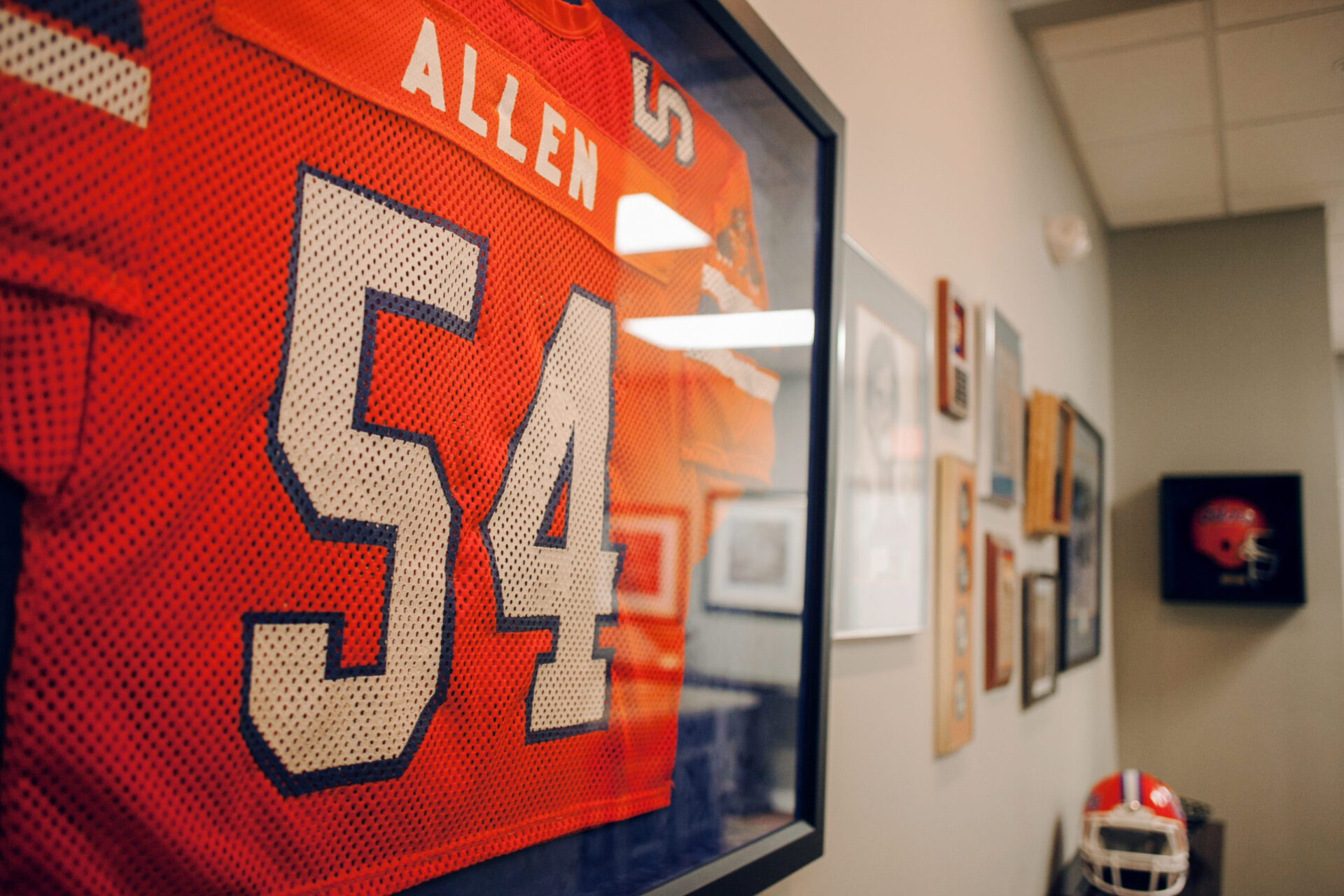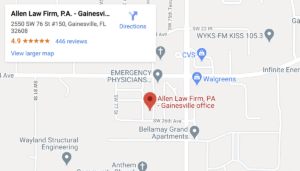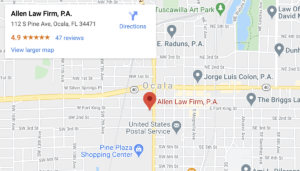Ocala Seat Belt Injury Lawyer

Seat belts have saved hundreds of thousands of lives. Seat belts also reduce serious injuries by about half. But these accomplishments come at a price. To restrain your body from smashing into the inside of the car, the seat belts place enormous force on your chest.
You can pursue compensation for your car accident injuries, including seat belt injuries. An Ocala seat belt injury lawyer from Allen Law Accident & Injury Lawyers will take on your case and help you identify your legal options.
Call today at (352) 351-3258 for a free initial consultation if you’ve been injured in a crash in Ocala, FL. Our legal team also handles truck accident cases, motorcycle accidents, pedestrian accidents in Ocala, taxi accidents, Ocala bus accidents, and more.
How Our Ocala Car Accident Attorneys Can Help You Pursue Compensation for Your Seat Belt Injuries
Allen Law Accident & Injury Lawyers serves injured clients throughout the state, including Ocala, Florida. Our lawyers have over a century of experience representing victims of traumatic injuries.
After an accident, our Ocala car accident lawyers provide the following:
- Legal advice and counsel to help you understand your legal rights and options
- A team of attorneys who have recovered hundreds of millions of dollars for clients
- Former insurance claim adjusters on staff to shepherd your claim
Car accident injuries can temporarily or permanently disable you. Contact Allen Law Accident & Injury Lawyers for a free consultation to discuss the injuries you suffered in your car accident and your rights under Florida law.
When Do Seat Belt Injuries Happen?
Most motorists involved in Florida car crashes wear their seat belts. According to the Florida Crash Facts Report, over 90% of drivers involved in crashes were wearing their seat belts.
Seat belts prevent front seat occupants from hitting the dashboard or steering wheel. They also keep backseat occupants from getting tossed around the vehicle or even ejected. When the vehicle experiences a rapid change in speed or direction, the seat belt locks, thereby restraining your body’s motion.
Seat belt injuries typically happen in head-on collisions and rear-end crashes. Florida’s crash statistics do not list the number of head-on or rear-end crashes. But, the National Safety Council (NSC) reports that rear-end crashes are the most common type of accident at 41.7%.
Head-on crashes are relatively rare, forming just 3.9% of all crashes. Together, these crashes account for 45.6% of all collisions.
Florida had a total of 401,540 crashes in 2021, as reported by the Florida Crash Facts Report. Applying the NSC’s numbers to Florida’s crash statistics, you can estimate that about 183,000 of Florida’s crashes were either head-on or rear-end crashes that could have caused a seat belt injury.
Types of Seat Belt Injuries
Serious seat belt injuries are relatively rare. But minor seat belt injuries happen in almost every rear-end or head-on collision. When your chest hits the seat belt, the impact can damage the tissues in your chest. Some common seat belt injuries include:
Bruised Chest
Bruises form when an impact causes blood vessels under the skin to tear, with the leaking blood leading to skin discoloration. The damaged tissues may also experience pain and swelling. Bruises usually heal within a few days to a few weeks.
Chest Strain
Your chest includes many muscles that move your upper body. The intercostal muscles sit between your ribs. They expand the chest so your lungs can fill with air when you inhale. Other muscles, like the pectorals, sit over your ribcage and attach to your ribs, collarbones, spine, and shoulder blades.
Strains happen when trauma causes your muscles to hyperextend or even tear.
Chest strain can cause symptoms such as:
- Muscle pain, particularly when inhaling
- Swelling
- Stiffness
- Weakness
A mild strain typically involves hyperextension and small tears. These injuries heal within four to six weeks. A severe strain might involve a full-thickness tear through the entire muscle. These strains will take longer to heal. Depending on the location, doctors might even operate to reconnect the muscle.
Ruptured Cartilage
Cartilage is a tough form of connective tissue made from collagen. Your top seven ribs on each side connect to your sternum with cartilage. The next three pairs of ribs are connected to the top ribs by cartilage.
A seat belt impact on the chest can tear that cartilage, resulting in an injury that can cause a range of symptoms, including:
- Chest pain near the center of your chest
- Inflammation
- Limited range of motion
- Clicking feeling or sound in your chest
Cartilage takes a long time to heal. As a result, you might experience symptoms and temporary disabilities for several months after your seat belt injury.
Fractured Rib
When your chest hits the seat belt, your ribs can bend. With enough force, the ribs have the potential to fracture.
Rib fractures can cause:
- Pain, particularly away from the center of your chest
- Swelling
- Stiffness
Broken ribs will typically heal without any treatment. The exception happens when you break multiple ribs in multiple locations. This injury, called “flail chest,” can damage your lungs or even kill you without immediate treatment.
Other Common Auto Accidents in Ocala We Handle
Our legal team also handles other common Ocala auto vehicle accidents involving:
- U-turn crashes in Ocala, FL
- Ocala rollover car accidents
- Red & Yellow light collisions in Ocala
- Ocala parking lot crashes
- Multi-vehicle car accidents in Ocala, FL
Schedule a Free Consultation With Our Ocala Seat Belt Injury Attorneys
Florida’s no-fault insurance system determines which seat belt injuries fall under your no-fault policy and which qualify you to pursue a claim against the at-fault driver. Contact Allen Law Accident & Injury Lawyers at (352) 351-3258 to discuss your seat belt injuries and your options for seeking compensation.




